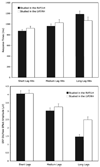Thinking ahead: the role and roots of prediction in language comprehension
- PMID: 17521377
- PMCID: PMC2712632
- DOI: 10.1111/j.1469-8986.2007.00531.x
Thinking ahead: the role and roots of prediction in language comprehension
Abstract
Reviewed are studies using event-related potentials to examine when and how sentence context information is used during language comprehension. Results suggest that, when it can, the brain uses context to predict features of likely upcoming items. However, although prediction seems important for comprehension, it also appears susceptible to age-related deterioration and can be associated with processing costs. The brain may address this trade-off by employing multiple processing strategies, distributed across the two cerebral hemispheres. In particular, left hemisphere language processing seems to be oriented toward prediction and the use of top-down cues, whereas right hemisphere comprehension is more bottom-up, biased toward the veridical maintenance of information. Such asymmetries may arise, in turn, because language comprehension mechanisms are integrated with language production mechanisms only in the left hemisphere (the PARLO framework).
Figures







References
-
- Altmann GTM, Kamide Y. Incremental interpretation at verbs: Restricting the domain of subsequent reference. Cognition. 1999;73:247–264. - PubMed
-
- Atchley RA, Burgess C, Keeney M. The effect of time course and context on the facilitation of semantic features in the cerebral hemispheres. Neuropsychology. 1999;13:389–403. - PubMed
-
- Balota DA, Duchek JM. Age-related differences in lexical access, spreading activation, and simple pronunciation. Psychology & Aging. 1988;3:84–93. - PubMed
-
- Baynes K, Eliassen JC. The visual lexicon: Its access and organization in commissurotomy patients. In: Beeman M, Chiarello C, editors. Right hemisphere language comprehension: Perspectives from cognitive neuroscience. Mahwah, NJ: Erlbaum; 1998. pp. 79–104.
-
- Beeman M. Semantic processing in the right hemisphere may contribute to drawing inferences from discourse. Brain & Language. 1993;44:80–120. - PubMed
Publication types
MeSH terms
Grants and funding
LinkOut - more resources
Full Text Sources
Other Literature Sources

